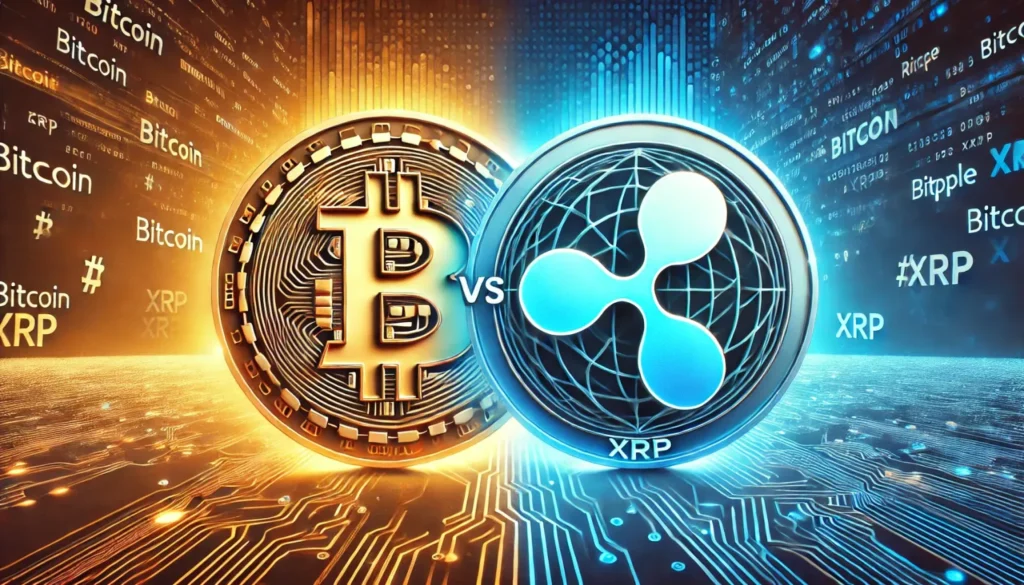
The cryptocurrency landscape is witnessing growing debates surrounding the influence of geopolitical movements on digital assets. One of the latest developments centers on the role of the BRICS nations (Brazil, Russia, India, China, and South Africa) and how their growing influence could potentially challenge or reshape the US’s crypto dominance, particularly concerning Bitcoin (BTC) and XRP (the digital token used by Ripple).
The BRICS Factor in Crypto Adoption
The BRICS nations, traditionally known for their collective efforts to reduce dependence on the US dollar, have made significant strides in promoting the use of digital currencies. This group of emerging economies is now looking to further cement its position by leveraging blockchain technology and creating alternatives to traditional financial systems.
China’s digital yuan, for example, is already in active development, and Russia has expressed interest in issuing a central bank digital currency (CBDC). These moves indicate that BRICS countries are seeking ways to challenge the dominance of the US dollar, which has long been the reserve currency for global trade.
Bitcoin’s Global Appeal
Bitcoin, the world’s largest and most recognized cryptocurrency, is often viewed as a decentralized store of value that operates outside the influence of any central authority. This makes it attractive to both individual investors and nations looking to hedge against inflation and political risk.
However, Bitcoin’s energy-intensive proof-of-work consensus mechanism has led to criticisms about its environmental impact. Additionally, regulatory concerns in the US and other regions have raised questions about Bitcoin’s long-term viability as a reserve asset.
XRP: A BRICS-Friendly Alternative?
XRP, on the other hand, offers a more centralized and scalable solution, positioning itself as a viable option for cross-border payments. Unlike Bitcoin, XRP utilizes a consensus algorithm that is less energy-intensive, making it more appealing to nations focused on sustainability.
Ripple, the company behind XRP, has been actively working with various financial institutions around the world to integrate its technology into the global payments network. In recent years, Ripple has made significant strides in partnering with banks and payment providers in BRICS nations, including partnerships in Brazil, Russia, and India. If BRICS nations continue to adopt Ripple’s technology for international transactions, it could give XRP a strong foothold as an alternative to Bitcoin in cross-border trade.
Could BRICS Shift the US Crypto Reserve?
The influence of BRICS on the global economic stage is undeniable, and their stance on cryptocurrency could significantly impact the future of the US crypto reserve. If BRICS nations continue to promote digital currencies like the digital yuan or XRP, it could pave the way for a more diversified crypto landscape, where Bitcoin no longer holds the same dominance.
While Bitcoin is still regarded as the “gold standard” of cryptocurrencies, XRP’s focus on interoperability and cross-border payments could make it more attractive to governments and financial institutions. If BRICS nations push for the use of XRP in their financial systems, it could pose a challenge to Bitcoin’s position in the global market.
Conclusion
As BRICS continues to grow in economic power and influence, its approach to digital currencies will be critical in shaping the future of the global financial system. Whether Bitcoin maintains its status as the global reserve cryptocurrency or whether XRP emerges as a favored asset in cross-border trade will depend on a mix of technological advancements, regulatory policies, and geopolitical factors.
For now, Bitcoin remains the leading cryptocurrency, but XRP’s potential to align with the goals of BRICS countries could provide it with a competitive edge. The evolving relationship between digital currencies and geopolitical power will be fascinating to watch in the coming years.




